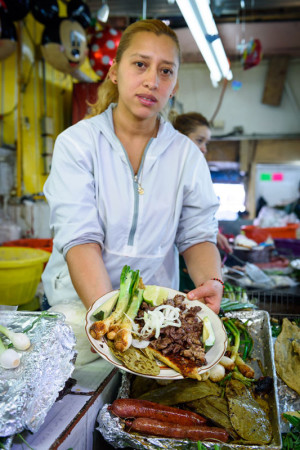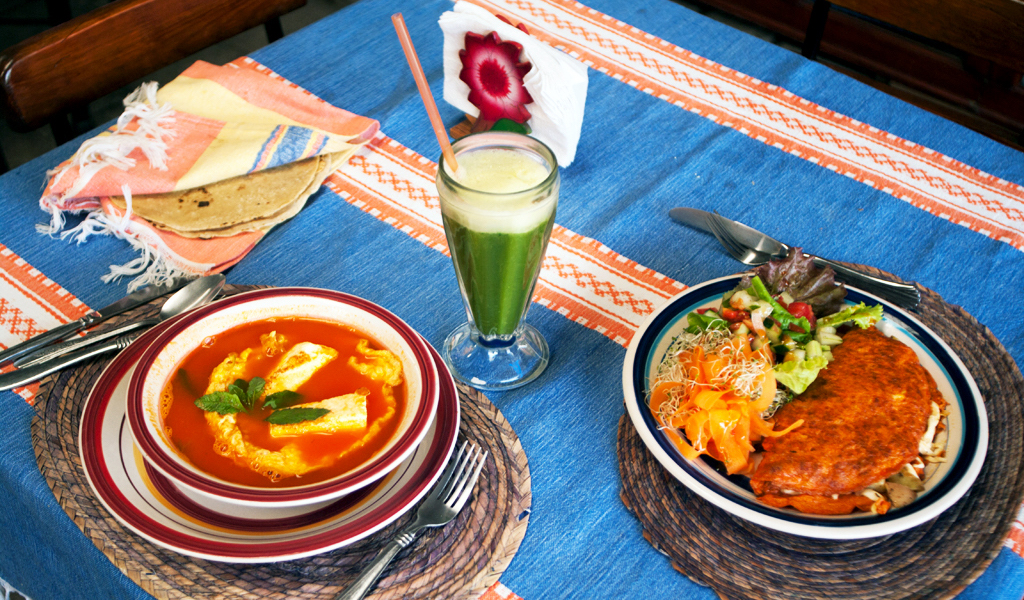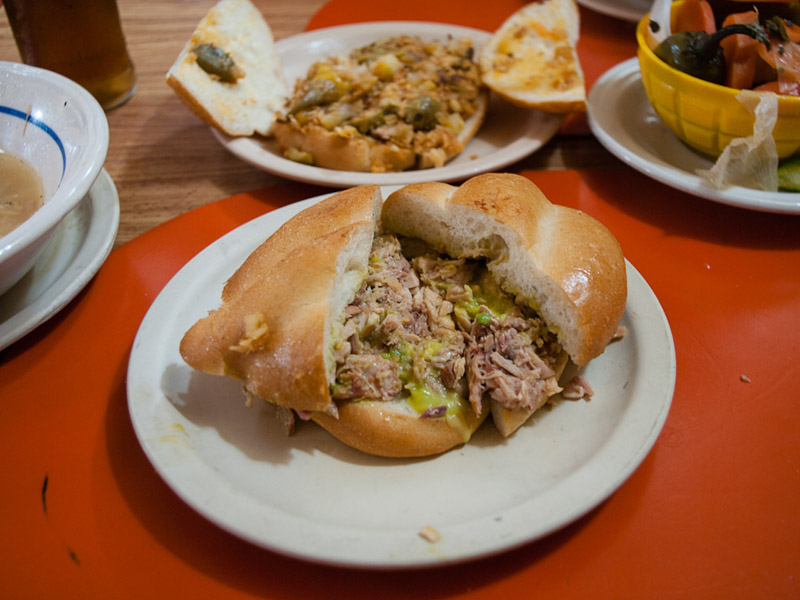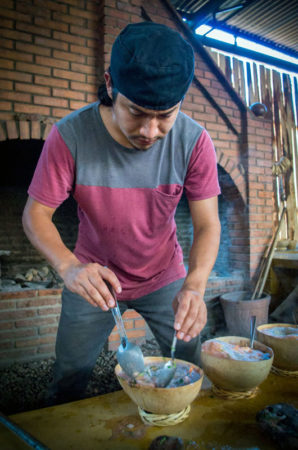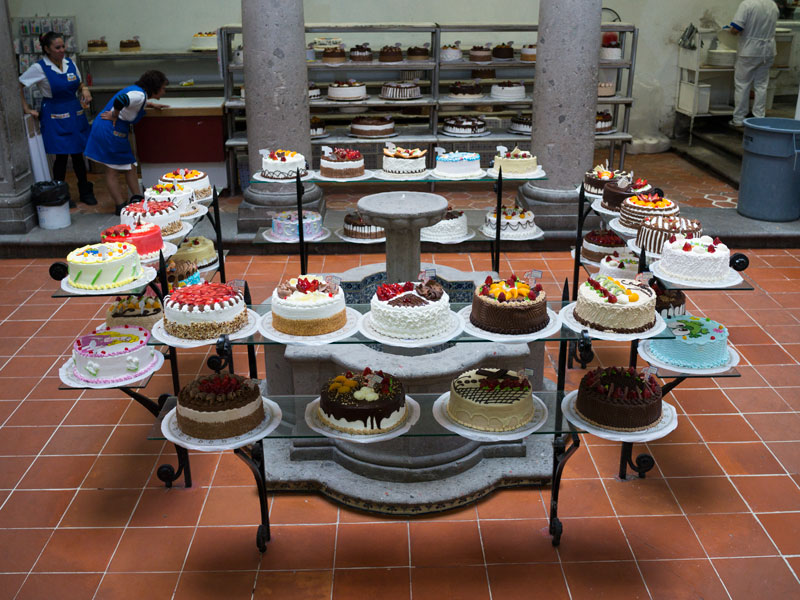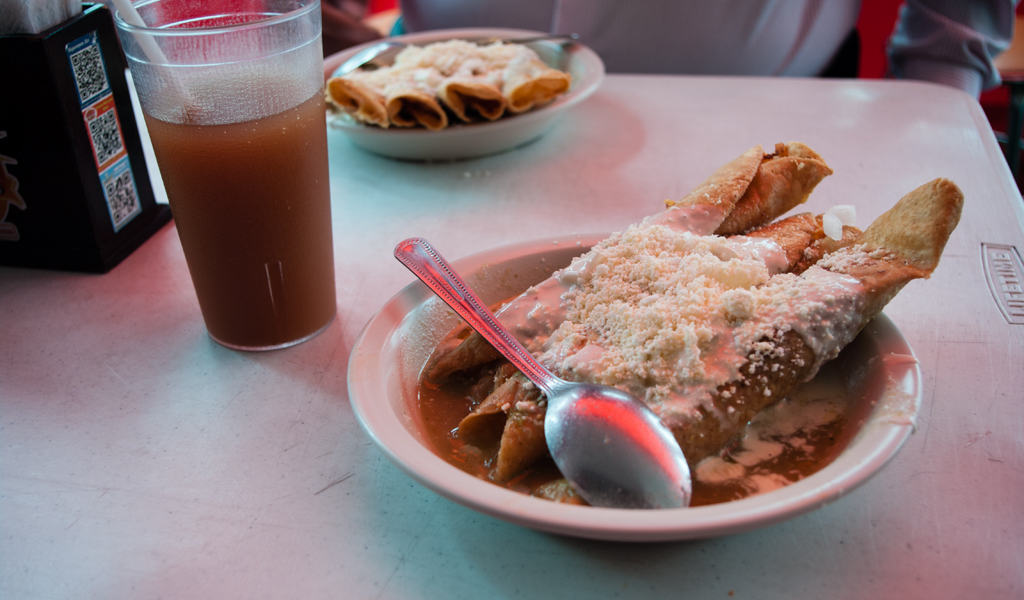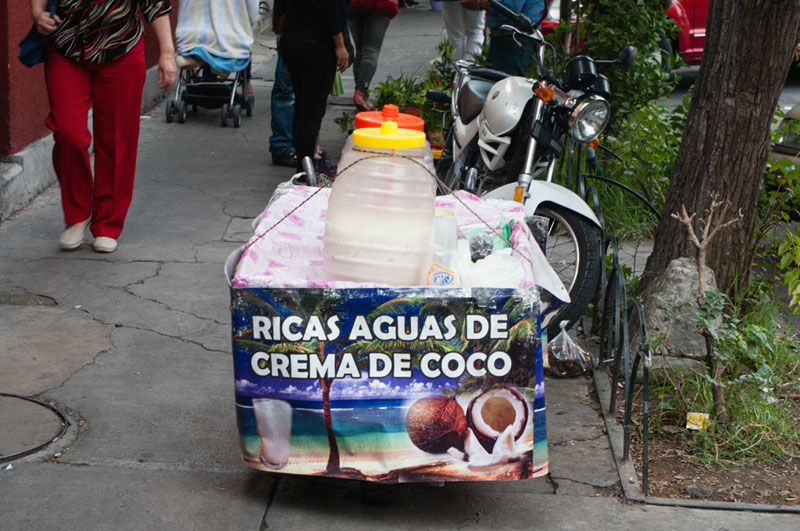We can't find the internet
Attempting to reconnect
Something went wrong!
Hang in there while we get back on track
Search results for "Ben Herrera"
Mexico City
Huaraches Rossy: Big Stuff
Visiting the Jamaica plant and flower market is one of our favorite activities in Mexico City; we love getting lost in its green alleys and never fail to emerge with at least one new plant and a beautiful bouquet of flowers. And of course, we’re always on the lookout for new places to eat. Our favorite barbacoa joint is in this market, but when we want a different experience we head to the huarache alley, where several stalls offer this tasty Mexican specialty.
Read moreOaxaca
El Pochote: Land to Table
Oaxaca has become one of our favorite food destinations in Mexico. A few weeks ago we visited the city again, but this time it wasn’t the moles or the decadent regional food that caught our attention, but an organic market where we had a delicious breakfast one morning. El Pochote (named after a thorny, flowering tree native to Central America) is an organization of local organic producers that was founded in November 2003 by local artist Francisco Toledo. Making an omelet at Mamá Lechuga, photo by Ben HerreraThe market offers all kinds of products, from vegetables and fruits to prepared meals and juices. The main objective of the market is to support those who grow or make healthy products of excellent quality, who interact with the natural environment in a way that respects local ecosystems and who maintain and increase the fertility of the soil and land.
Read moreMexico City
La Casa del Pavo: Talk Turkey
Editor’s note: Alfonso Cuarón’s film “Roma,” set in Mexico City between 1970 and 1971, is expected to win big at the Oscars this weekend – it’s up for ten awards. To celebrate the movie’s success, we’re republishing our 2013 review of La Casa del Pavo, where the main character, Cleo, goes to have a sandwich with her co-worker on their day off and meet up with their boyfriends. Not only is this spot one of the few from the film that is still in business, it is almost completely unchanged. The bird that holds pride of place at the Thanksgiving table has just as important a role south of the border. Turkey has actually been a fundamental part of Mexican cooking for centuries: The Aztecs had domesticated the fowl before they had even laid eyes on a chicken.
Read moreOaxaca
Caldo de Piedra: Stone Hot Soup
In Oaxaca, a state where gastronomy is almost a religion, there are some extraordinary dishes that are prepared only for special occasions because of the complexity of preparation. Mole chichilo, for example, uses more than 30 ingredients, and its preparation can take up to 3 days. But there are spectacularly tasty (and complex) dishes that can be had anytime. One of these is caldo de piedra (stone soup) from the Tuxtepec region. On our last visit to Oaxaca City, we visited a restaurant a few miles outside of the center whose rendition of this soup blew our minds.
Read moreMexico City
Tres Leches: The Magic Number
Pastel de tres leches is beloved throughout much of Latin America, and yet its origins remain a mystery. Some people claim that it was first baked in Nicaragua, others that the recipe was first printed on the label of a well-known brand of canned condensed milk in Mexico. Tres leches is usually a sponge cake soaked – as you might have guessed from the name – in a mixture of condensed, evaporated and regular milk, which might be flavored with vanilla, rum and cinnamon. The cake is baked and soaked in the milk mixture while it’s still warm and in the pan. It sits overnight so that the milk and flavorings thoroughly saturate every bite.
Read moreMexico City
El Rey de las Ahogadas: All Hail the King
We’ve written previously about flautas, one of our favorite street foods. Those crisp, finger-friendly “flutes” with their deeply savory, spiced chicken, pork, beef or potato filling are all about the gratifying crunch of the golden, deep-fried rolled tortilla (and the sour cream and grated cheese don’t hurt either). It’s hard to imagine how that winning combination can be improved upon, but at El Rey de las Ahogadas in Colonia Del Valle, we’ve found a delicious alternative. Although El Rey offers quesadillas, tacos and other Mexican delicias, as the big banner above the open storefront advertises, people come here mostly for the flautas ahogadas. These “drowned” flautas sit in a bowl filled with a soupy salsa verde so that they soften.
Read moreMexico City
Ask CB: What Are Aguas Frescas?
Dear Culinary Backstreets, I’ve heard about drinks in Mexico called “aguas frescas,” but what exactly are they? Visitors to Mexico are sure to encounter aguas frescas, a popular category of drinks that are ubiquitous at food stands and eateries around the country. These colorful beverages, whose name literally means “fresh waters,” come in a variety of different flavors depending on the main ingredient, but generally all are made by mixing a fruit juice with water and sugar.
Read more